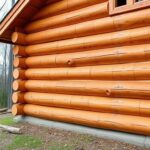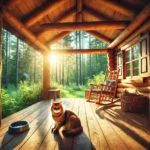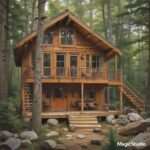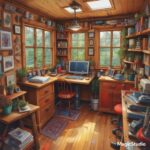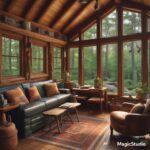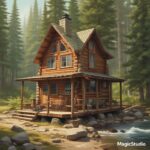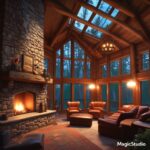Introduction: The Foundation of Your Cabin’s Longevity
The selection of timbers is the key to the construction of the log cabin. Proper choice of wood species not only affects the aesthetic beauty of your cabin but it affects its structural performance, the duration of its life, and the environmental resistance of it through its lifetime. This comprehensive guide explores the nuanced world of wood selection, providing insights that go far beyond simple material choice.
Understanding Wood Characteristics
Structural Integrity Factors
They all possess their specific personality, which determines the construction of a log cabin, i.e. The profile of performance, which is in itself complex, is based on the combination of density, water resistance, naturalness, and structural stability. To professional builders, it is clear that no single wood type is a one-shot solution.
Moisture and Climate Considerations
Wood interacts dynamically with its environment. On the other hand, humidity, temperature fluctuations, and environmental stress all uniquely activate different species. A timber, which is highly tolerant of dry, mountainous conditions, is vulnerable to failure, even at a fast pace, once moved to a humid, coastal environment. Understanding these interactions becomes crucial for long-term cabin durability.
Top Wood Species for Log Cabin Construction
Douglas Fir: The Structural Champion
Douglas fir is an optimal wood for log cabin building. Its remarkable strength-to-weight ratio provides exceptional structural performance. Timber is phenomenally stable in terms of the super dimension (i.e., it hardly contracts and dilates), that is hardly distortion occurs bow. That innate resistance to rotting is boring when it’s required.
From the professional builder’s point of view, Douglas fir possesses a uniform grain structure and approximately linear growth pattern. These properties allow for a smoother milling process and a more consistent construction outcome. Furthermore, the light reddish-brown woodiness makes the inclusiveness possible, as it can be conveniently made to fit into different architectural style backgrounds.
Western Red Cedar: Nature’s Preservative
Western red cedar is a benchmark for natural durability. Its continuous oils are excellent in their properties as a protectant for rot, insects, and moisture. Natural chemical compounds of the wood are efficient preservatives and therefore no overreliance on artificial agents is needed.
The light weight of western red cedar makes it easy to move to the construction site. Due to the reddish-brown color and aromatic character of the flavor they impart, the flavoring contributes to the sensory appeal of cabin interiors. However, a leaner density means a weaker structural strength when compared with denser woods for which engineering consequences should be taken into account.
White Pine: Affordable Versatility
[W]hite pine provides a desirable combination of cost versus performance. The opposite side which is more yielding is also easier to handle and is also linked with a lower threshold of entry. Cabin owners have a high degree of design freedom, as cabin owners’ wood consults and finishes easily.
Among the many wood choices available to professional builders in moderate climate locations, white pine is the recommendation. Although not as naturally tough as cedar or Douglas fir, proper care and control can substantially extend its service life. Because of the pale color of the wood, the object is perceived as tonic and natural by a majority of cabin lovers.
Spruce: Cold Climate Performer
Spruce excels in harsh, cold environments. Because it is a tightly packed, straight grain which allows it to have extremely high mechanical robustness against extreme temperature changes. Spruce characteristics are highly adapted to the scenario of large temperature fluctuations in areas.
The wood’s lighter weight reduces transportation and handling costs. Being a light color it has a clean and modern look and is compatible with interior cabin designs. Because spruce is homogenous and repeatable in construction, it is highly valued by construction scientists in the field of spruce.
Eastern White Pine: Historical Authenticity
Eastern white pine is an important component in the history of log cabin building. Early American immigration to the US would routinely adopt this kind of wood, reinforcing an association with past carpenter crafts. Due to its softer characteristic more facile manipulation is achieved and more complex blending protocols can be applied.
Since the wood with lower density needs to be more carefully preserved and treated, there is a necessity that can be further emphasized here. Builders often recommend additional treatments to enhance durability. However, many cabin owners enjoy the rustic appeal and historical feel of eastern white pine, even when it comes with some challenges.
Advanced Selection Considerations
Growth Location Impact
The wood growth conditions have an important impact on its behavior. Trees that are cultivated in a dense forest have closely spaced rings and therefore cannot be processed easily into lumber. General structural properties but especially wooden-derived properties in the case of naturally grown (i.e. more complex) Timber compared to being derived from Tipsily treed in easily accessible areas such as plains are superior.
Sustainable Sourcing
Modern cabin construction increasingly emphasizes sustainable wood sourcing. Find certificates from organizations, like the Forest Stewardship Council (FSC). These criteria guarantee ethical, responsible forestry and environmentally sustainable harvestation activity.
Preparation and Treatment Techniques
Moisture Content Management
Proper wood preparation begins with careful moisture management. Logs need to be dried out to 15-19% moisture content at construction. Therefore, it does not cause any subsequent warp, check, or the associated structural problem.
Log air drying is done by professional builders in the range of 12-24 months based on the surrounding climate conditions. Kiln-drying is an accessory device that has much tighter controlled all components of moisture content removal. Each approach carries specific advantages and considerations.
Cost and Performance Analysis
Long-Term Investment Perspective
The wood selection represents an investment beyond initial material costs. Consider repair requirements, including replacement cycle and environmental performance. Slightly more expensive and with less maintenance wood can become economically more viable over the coming decades.
Comparative Performance Metrics
Different wood types offer varying performance characteristics:
| Wood Type | Durability | Cost | Maintenance | Aesthetic Appeal |
|---|---|---|---|---|
| Douglas Fir | High | Moderate | Low | Excellent |
| Western Red Cedar | Very High | High | Very Low | Outstanding |
| White Pine | Moderate | Low | Moderate | Good |
| Spruce | Moderate | Low | Moderate | Clean |
| Eastern White Pine | Low | Low | High | Authentic |
Regional Recommendations
Climate-Specific Selections
Select wood types that match your specific environmental conditions. For example, coastal regions need decay-resistant species, while mountainous areas need species that can withstand temperature changes. Local forestry services can provide region-specific recommendations.
Conclusion: Making an Informed Choice
Choosing the appropriate wood for a log cabin is a balancing act among various considerations. Referring to structural and aesthetic needs, budget limitations, and long-term performances. No universal solution exists—each project demands careful, personalized assessment.
Consultation with professional log homebuilders and local foresters provides access to a tremendous amount of useful information. Their experience is valuable in deciphering the mysterious forest of wood choice so that your cabin continues to be a model of thoughtful design.
Your cabin is not just a building, but rather a natural material, handwork, and personal taste incarnate. Do your best, and it will be the log cabin that will provide comfort and happiness for the coming generations.


